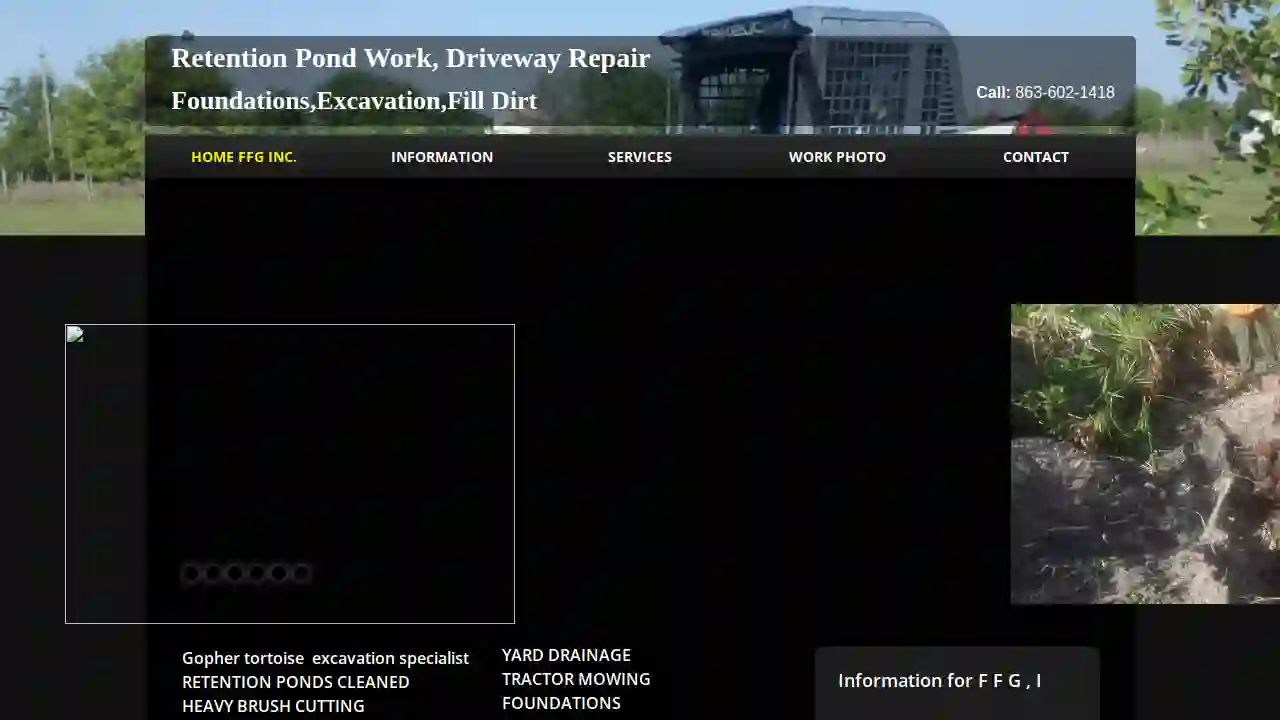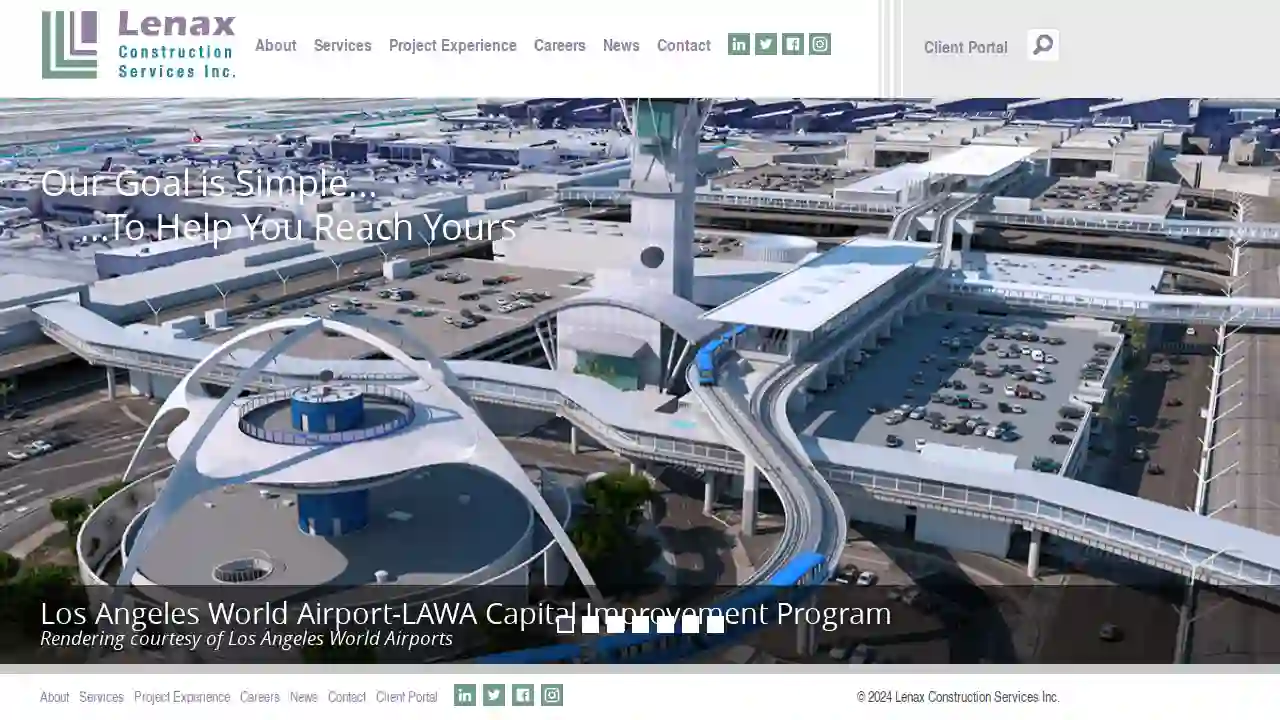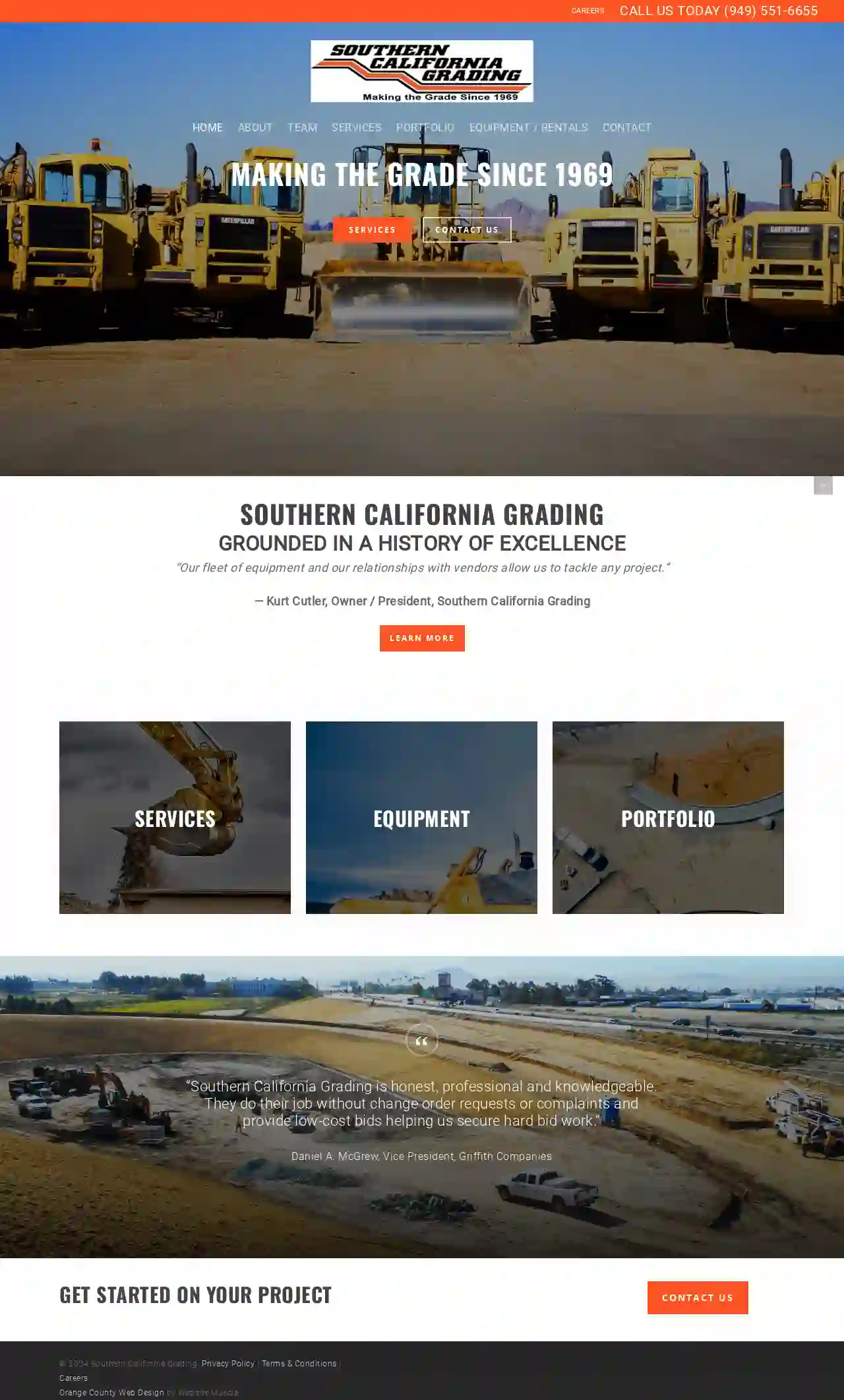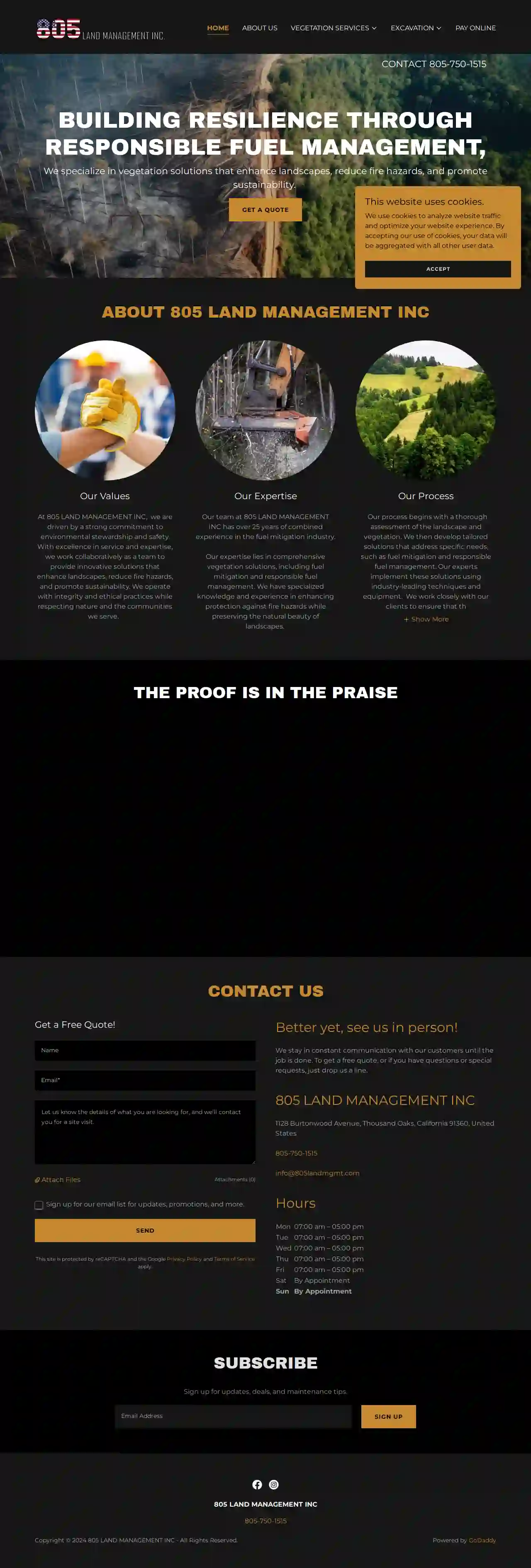Demolition Contractors Bonita
Find the best Demo Companies in Bonita
Receive multiple Demolition Contractor quotes for your project today! Compare profiles, reviews, accreditations, portfolio, etc... and choose the best offer.

Schreiber Excavating
53 reviews1767 Kenyon Road, Ontario, 14519, USSchreiber Excavating has a long history of happy clients across New York State. You can expect only the best in construction, utility installation, and trucking services from Dan and his team. Working at an expert level in construction requires highly trained workers and precision equipment. We use only the most advanced technologies to ensure safety, efficiency, and the best price possible. At Schreiber Excavating, our top priority is client satisfaction. You can expect a job well done—every time. Schreiber Excavating has a proven track record of delivering only the finest quality site work and utility services from initial conception to final product. Our highly trained team places safety first while maintaining a diligent focus throughout the entire process. You can trust Schreiber Excavating to make your construction a reality.
- Services
- Why Us?
- Testimonials
- Gallery
Get Quote
KR Land Development LLC: Land Clearing and Site Prep
516 reviewsOrange, USAbout KR Land Development At KR Land Development, our mission is to transform natural landscapes into safe, sustainable, and accessible spaces. With a deep respect for the environment and a commitment to efficiency, we provide expert land clearing services that pave the way for responsible land development. Our goal is to balance the needs of our clients with the preservation of nature, delivering innovative solutions that create a harmonious coexistence between humanity and the land. We are dedicated to improving the accessibility, safety, and utility of our clients’ properties while minimizing our impact on the environment. By aligning cutting-edge technology with eco-conscious practices, we aim to be leaders in the industry, leaving a legacy of well-cleared land and a healthier planet for future generations. Ready to Get Started On Your Land Clearing Project? We've Got You Covered! If you are looking to get started on your next land clearing project, we are here to help! KR Land Development offers free consultations to every client that is interested in our land clearing or property services. We are licensed & insured, protecting our clients and their property at all times throughout the land clearing process.
- Services
- Why Us?
- Gallery
Get Quote
Florida Finish Graders, Inc.
52 reviewsDavis, USFlorida Finish Graders, Inc. Florida Finish Graders, Inc. is located in Central Florida, with Service provided coast to coast. We are your source for central Florida land clearing, grading, excavation, foundations, and bobcat work, tractor work. We here at Florida Finish Graders, Inc. do the best work the first time, and at the most affordable price! Our Mission Helping property manager's take care of their grounds! We provide a variety of services for you. We can put together a plan so that your work site is in compliance with the FDEP from the start, avoiding costly infractions, as Raymond is a Licensed, State Certified Florida storm water erosion and sedimentation Control Inspector. Our Experience Working with the state of Florida, Operating the backhoe according to direction provided by the Project’s Florida Fish and Wildlife Conservation Commission (FWC) Gopher Tortoise Authorized Agent to excavate gopher tortoise. We tear out concrete driveways for complete replacement. Florida driveways can be made with recycled material, such as crushed concrete and asphalt-black top. Tree stump removal, tree stump grinder, large or small, we do it all. F F G Inc., has done many retention ponds or detention pond, new and rebuild to swfwmd standards for recertification, they have certified our work for double the standard time because of the superb work on our retention pond, swale work, grading, sod etc.. Florida Finish Graders, Inc. has sand and fill dirt for your yard, or complete tear out of your grass yard, (sod) and then re-grade your yard, then apply grass. FFG Inc,. can build your home foundation from the ground up or fill in stem wall foundation, building mono slab foundations. We provide sand, fill dirt, recycled material in central Florida. We can level your dirt.
- Services
- Why Us?
- Gallery
Get Quote
Lenax Construction Services, Inc.
4.817 reviews3700 Wilshire Blvd., Suite 560, Los Angeles, 90010, USAbout LENAX Since its inception in 1993, Lenax Construction Services, Inc. (LENAX) has provided quality construction consulting services to a diverse range of engineering, design, construction firms, and public sector owners. We take pride in our history of repeat business directly with clients and owners, and we have established long-lasting professional relationships with many architectural, engineering, and construction management firms as consultants on larger project teams. LENAX provides professional support for a broad spectrum of projects and sectors, with a special focus on the Southern California region. With a history of consulting from different perspectives - we have worked as consultants to architect/engineers, owners, contractors and construction/program managers - we have flexibility in how we provide our services, and our overall management styles for the best fit with any specific client's needs. With corporate headquarters in Los Angeles, LENAX is a woman-owned consulting firm certified as a SBE/WBE/DBE/UDBE/CBE/LBE by the County of Los Angeles, Caltrans, Metro, and a number of other public agencies. LENAX is also recognized as a Small Business by the Small Business Administration.
- Services
- Why Us?
- Testimonials
- Gallery
Get Quote
Urban Irvine Construction
56 reviewsSuite A, 16291 Construction Circle East, Irvine, 92606, USGrounded in a History of Excellence Southern California Grading was founded in 1969 by Bob Cutler and Bob Kehrer—two friends with extensive hands-on engineering and earthwork experience. In our early days, when Orange County was just starting to grow, we forged strong relationships with developers like the Irvine Company. Successful projects ranging from commercial ventures to developing new roads made Southern California Grading essential to bringing people and businesses to Irvine. These efforts began decades-long relationships with our clients and peers in the construction community. A Legacy of Teamwork and Mutual Respect Based in Irvine, California, Southern California Grading is still family-owned, and we pride ourselves on the core values of teamwork and mutual respect. Over the years, we have developed strong relationships with many clients and devoted employees. Some have been with us for over 25 years. Southern California Grading at a Glance $25 million in annual revenues Bondable and insured with an A+ rating Banks with one of the largest U.S. financial institutions Owns and rents its own fleet of heavy equipment Diverse market expertise Our Commitment to Excellence Our core principles of integrity, respect, responsibility and hard work have made us a premier provider of grading and construction services since 1969. We enjoy the challenge of navigating the ups and downs of our industry by focusing on client needs and adapting to industry advancements. A Firm Foundation for Success Today, Southern California Grading has a long history of successful projects throughout California. We’re proud of our reputation as a company that reliably provides a firm foundation for even the most complex building projects. Our experienced employees, technologically advanced equipment, and proven procedures provide assurance that the project will be completed on-schedule, within budget and done right, the first time.
- Services
- Why Us?
- Accreditations
- Gallery
Get Quote
ACI - Abate Construction, Inc
4.69 reviews3504 Standard Street, Suite 6, Bakersfield, 93308, USQuality Commercial and Residential Renovations and Remodeling Serving Kern County, CA CALL FOR A FREE ESTIMATE Professional Commercial and Residential Renovation and Remodeling Services Abate Construction, Inc. is a veteran and locally owned and operated general contractor. We are bonded, insured, and licensed to work in both CA and AZ. We are located in Bakersfield, CA, and proudly serve commercial and residential customers in Kern County, including Bakersfield, East Kern, Delano, Oildale, Westside, Ridgecrest, Wasco, Greenfield-Panama, Rosamond, Lamont, and the surrounding areas. We offer free estimates for all our jobs. Let Us Help You Enhance the Beauty and Functionality of Your Home or Business We are your local company – we have over 13 years of experience working in this area of CA. We are familiar with the communities, homes, and permits required to work on any home or business renovation project. Our technicians work diligently to provide you with comprehensive services to maintain or create a home or business that you can be proud of. Our renovation projects can help you enhance the beauty and functionality of your property. About Abate Construction, Inc. Abate Construction, Inc. is dedicated to providing award winning construction service for all projects. Our success as a business is based on a simple and time proven approach. We listen to our client’s needs and understand their expectations. We ensure to exceed your expectations by utilizing the resources from our seasoned staff. We work in partnership with owners, architects, subcontractors, and engineers to deliver results. Abate Construction, Inc. delivers the best cost to quality ratio for each project. We specialize in helping the owner select cost-effective alternatives to maximize value. We Are Committed to Helping You Abate Construction, Inc. has been recognized as one of Bakersfield's premier residential and commercial contracting firms for the past 6 years. Founded with core values of providing professional construction services, high-quality cost-efficient buildings, and on time delivery, we have successfully developed reliability and performance-based relationships with our clients. Organization and good communication are fundamental in our customers’ satisfaction. With over 13 years of experience in the Bakersfield area, we can meet all your construction needs, including remodels, additions, new construction, job management, and consulting.
- Services
- Why Us?
- Testimonials
- Gallery
Get Quote
A-1 Septic Services
4.675 reviewsModesto, USThe Best Value in Septic Tank Services in Merced County, Stanislaus County, and San Joaquin County Since 1990 The Best Value in Grading & Excavating in Merced County, Stanislaus County, and San Joaquin County Since 1990 Best Choice for Portable Restroom Rentals in Merced County, Stanislaus County, & San Joaquin County Expert Septic Tank Services, Grading & Excavating in Modesto, Oakdale, Escalon & Surrounding Areas For the best septic tank installation and repair, septic tank pumping, utility trenching, and grading/excavation services in Merced County, Stanislaus County, and San Joaquin County, choose A-1 Septic and AAA Backhoe Service. For over 30 years, we've been the preferred septic tank company and excavator for thousands of general contractors, builders, commercial businesses, property managers, city agencies, homeowners, and real estate agents. They trust us because we consistently deliver high quality workmanship and personalized customer service at very competitive prices. Whether you need septic tank repair in Modesto, leach line additions in Ceres, or utility trenching in Salida, we have the skills, knowledge, and expertise to get the job done according to the highest industry standards. AAA Backhoe Service holds a Class A General Engineering Contractors License from the California State License Board, and has earned an A+ rating with the Better Business Bureau. We always use the industry's best practices to ensure that all work gets completed on time, in budget, and in accordance with county and city building codes.
- Services
- Why Us?
- Accreditations
- Testimonials
- Gallery
Get Quote
JS Company Inc. - Js Co.
53 reviewsBrentwood, USABOUT JS COMPANY AN AFFORDABLE CONTRACTOR YOU CAN TRUST JS Co. is a locally owned, insured and licensed general engineering firm founded in 1998. Its mission is to become your preferred contractor in the San Francisco Bay Area, offering a gamut of services to complete any project. There is no “too small” or “too large” job for us. Count on JS Co. to provide speedy and fair estimates whether you are a homeowner, a business representative, an insurance adjuster or a public official. Our team of friendly and talented professionals is ready to exceed your expectations starting with your initial contact until the completion of your project. Review our strength in numbers and learn more about some of our happy clients in our References section. 0 + YEARS OF EXPERIENCE 0 + PROJECTS COMPLETED 0 + SATISFIED CLIENTS 0 + CONSTRUCTION LICENSES LET JS COMPANY BECOME YOUR PREFERRED CONTRACTOR JS has delivered hundreds of projects to hundreds of clients for over two decades. We look forward to assisting you with your next project. Give us the chance to earn your business! Call Us at 415-460-2100
- Services
- Why Us?
- Testimonials
- Gallery
Get Quote
Noecon
53 reviewsSan Jose, USNOECON General Engineering Contractor NOECON is a family-owned, operated and supervised company based in Northern California. We are licensed, bonded, and fully insured. Our mission is to serve our clients with the highest level of quality on every project. We do this through exceptional workmanship, attention to detail, timeliness, professional integrity, and care for safety while staying within our client’s budget. We value the importance of our relationships with all of our clients. Our Promise We stand by our promise to deliver high quality services, and we strive for excellence every day on each and every project. You can be 100% confident that you’re going to get the best service at the most competitive prices in Silicon Valley. Some companies have you choose great quality or cost-efficiency. We give you both. Only NOECON delivers demolition, hauling and excavation projects with true high quality. And with NOECON, you don’t have to worry about getting permits or creating site plans, we do it all. So you can focus your attention on more important things – like getting a good night sleep.
- Services
- Why Us?
- Gallery
Get Quote
805 Land Management Inc.
52 reviews1128 Burtonwood Avenue, Thousand Oaks, 91360, USBuilding resilience through responsible fuel management We specialize in vegetation solutions that enhance landscapes, reduce fire hazards, and promote sustainability. About 805 LAND MANAGEMENT INC At 805 LAND MANAGEMENT INC, we are driven by a strong commitment to environmental stewardship and safety. With excellence in service and expertise, we work collaboratively as a team to provide innovative solutions that enhance landscapes, reduce fire hazards, and promote sustainability. We operate with integrity and ethical practices while respecting nature and the communities we serve. Our Expertise Our team at 805 LAND MANAGEMENT INC has over 25 years of combined experience in the fuel mitigation industry. Our expertise lies in comprehensive vegetation solutions, including fuel mitigation and responsible fuel management. We have specialized knowledge and experience in enhancing protection against fire hazards while preserving the natural beauty of landscapes. Our Process Our process begins with a thorough assessment of the landscape and vegetation. We then develop tailored solutions that address specific needs, such as fuel mitigation and responsible fuel management. Our experts implement these solutions using industry-leading techniques and equipment. We work closely with our clients to ensure that their vision is brought to life. We provide regular updates throughout the project and are always available to answer any questions.
- Services
- Why Us?
- Gallery
Get Quote
Over 22,076+ Excavation Businesses on our platform
Our excavation experts operate in Bonita & surrounding areas!
ExcavationHQ has curated and vetted Top Excavation Pros arround Bonita. Find the most reliable pro today.
Frequently Asked Questions About Demolition Contractors
- Clear the Site: Remove all furniture, appliances, personal belongings, and any valuable items from the structure.
- Secure the Perimeter: Fence off the demolition area to prevent unauthorized access and protect surrounding property.
- Disconnect Utilities: Arrange for the disconnection of electricity, gas, water, and other utilities servicing the building.
- Hazardous Material Abatement: If asbestos, lead paint, or other hazardous materials are present, have them professionally removed before demolition begins.
- Notify Neighbors: Inform your neighbors about the demolition schedule to minimize disruptions and address any concerns.
- Obtain Permits: Ensure all necessary demolition permits are in place before starting work.
- Permits and Regulations: Obtain all necessary demolition permits and comply with local building codes and environmental regulations.
- Contracts: Have a clear and comprehensive contract with the demolition contractor outlining the scope of work, payment terms, and liabilities.
- Environmental Laws: Comply with environmental laws regarding hazardous material removal, waste disposal, and pollution control.
- Neighboring Property Rights: Respect neighboring property rights and take measures to prevent damage or disruption to adjacent properties.
- Worker Safety: Adhere to worker safety regulations and provide a safe working environment for demolition crews.
Do I need a permit for demolition?
How do I prepare my property for demolition?
Can I do demolition myself?
What are the legal considerations for demolition projects?
Do I need a permit for demolition?
How do I prepare my property for demolition?
- Clear the Site: Remove all furniture, appliances, personal belongings, and any valuable items from the structure.
- Secure the Perimeter: Fence off the demolition area to prevent unauthorized access and protect surrounding property.
- Disconnect Utilities: Arrange for the disconnection of electricity, gas, water, and other utilities servicing the building.
- Hazardous Material Abatement: If asbestos, lead paint, or other hazardous materials are present, have them professionally removed before demolition begins.
- Notify Neighbors: Inform your neighbors about the demolition schedule to minimize disruptions and address any concerns.
- Obtain Permits: Ensure all necessary demolition permits are in place before starting work.
Can I do demolition myself?
What are the legal considerations for demolition projects?
- Permits and Regulations: Obtain all necessary demolition permits and comply with local building codes and environmental regulations.
- Contracts: Have a clear and comprehensive contract with the demolition contractor outlining the scope of work, payment terms, and liabilities.
- Environmental Laws: Comply with environmental laws regarding hazardous material removal, waste disposal, and pollution control.
- Neighboring Property Rights: Respect neighboring property rights and take measures to prevent damage or disruption to adjacent properties.
- Worker Safety: Adhere to worker safety regulations and provide a safe working environment for demolition crews.